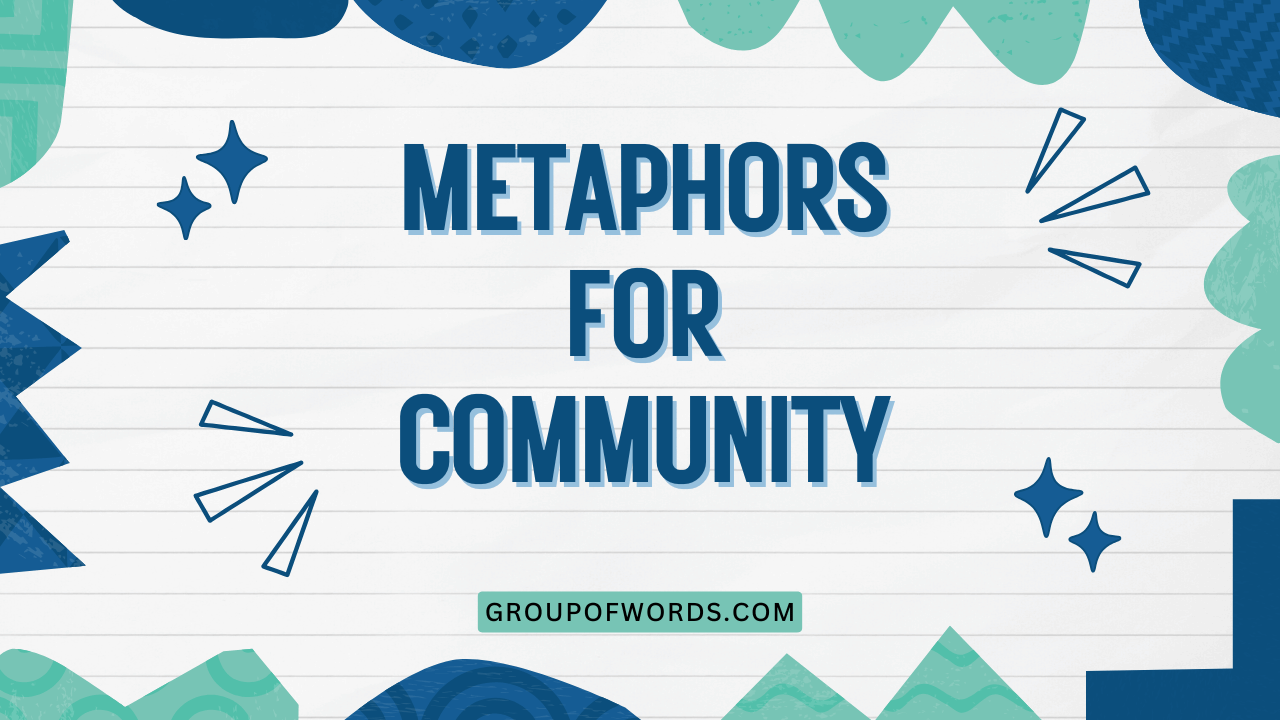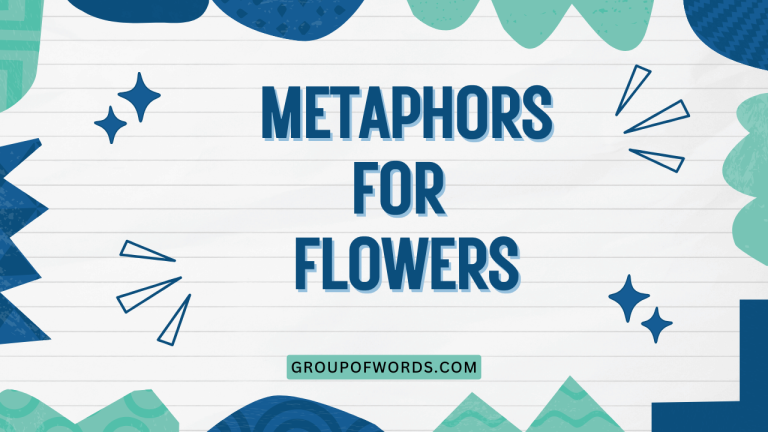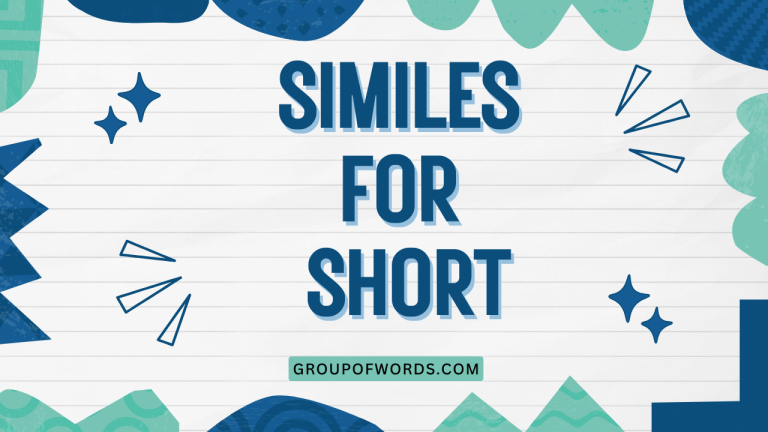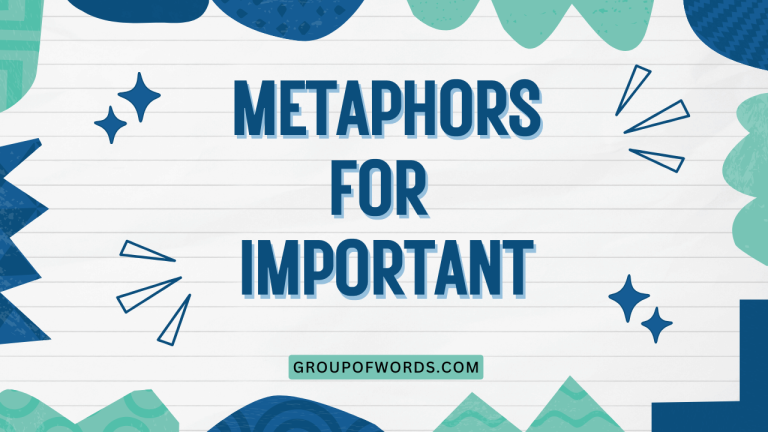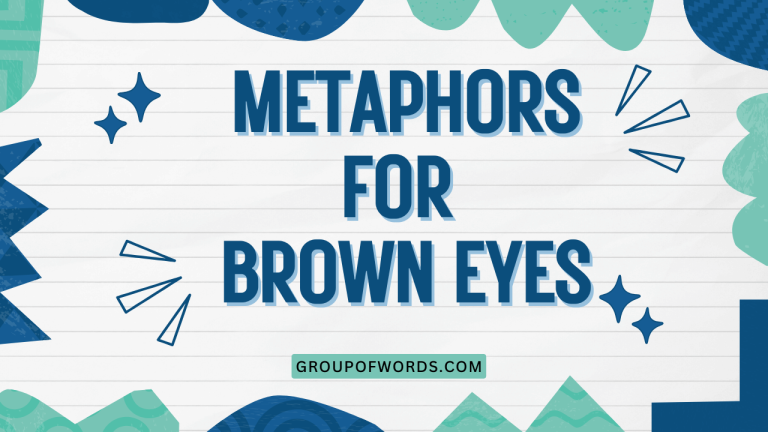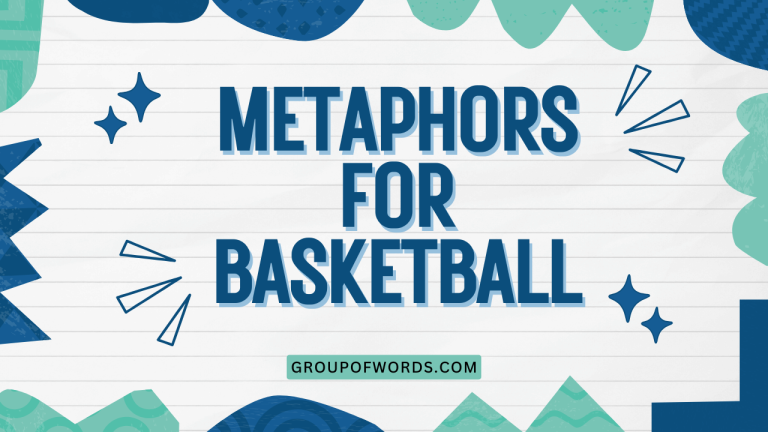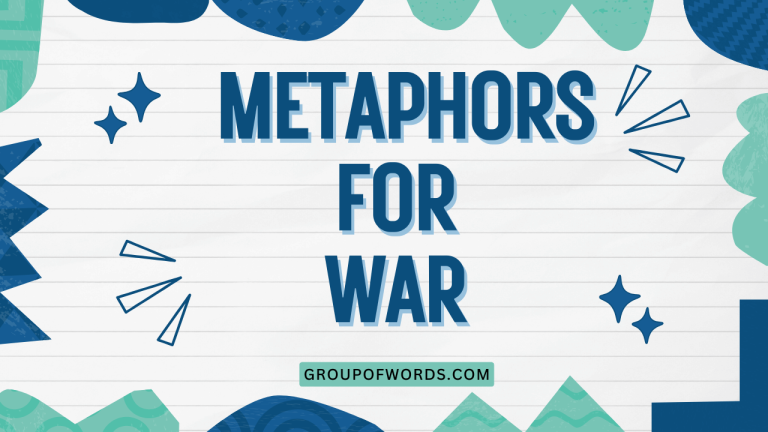Community Metaphors: A Guide to Figurative Language
Metaphors are powerful tools that allow us to understand abstract concepts by relating them to more concrete ideas. When it comes to community, metaphors help us grasp the complex dynamics, relationships, and shared experiences that define it.
Understanding these metaphors enriches our comprehension of social structures and enhances our ability to communicate effectively about them. This article will explore various community metaphors, their structural elements, usage rules, and common mistakes, providing you with the knowledge and practice to master this essential aspect of English grammar and communication.
This guide is beneficial for students, educators, writers, and anyone interested in improving their understanding of language and social dynamics.
This comprehensive guide covers everything from basic definitions to advanced usage, complete with examples, exercises, and frequently asked questions. By the end of this article, you will be equipped to identify, interpret, and use community metaphors with confidence and precision.
Table of Contents
- Introduction
- Definition of Community Metaphors
- Structural Breakdown
- Types and Categories of Community Metaphors
- Examples of Community Metaphors
- Usage Rules
- Common Mistakes
- Practice Exercises
- Advanced Topics
- FAQ
- Conclusion
Definition of Community Metaphors
A metaphor is a figure of speech that describes an object or idea by comparing it to something else, suggesting a similarity between them. In the context of community, metaphors are used to represent the complex relationships, shared values, and collective identity of a group of people.
These metaphors are not literal but rather symbolic representations that help us understand the abstract concept of community in more tangible terms.
Community metaphors function by transferring qualities from the source domain (the thing being used as a comparison) to the target domain (the community itself). This transfer allows us to perceive and understand the community in a new light, highlighting certain aspects and downplaying others.
The choice of metaphor can significantly influence how we perceive and interact with our communities.
Metaphors are widely used in various contexts, including political discourse, social commentary, and everyday conversation. They provide a powerful way to frame discussions about community, shape public opinion, and inspire collective action.
Understanding the different types of community metaphors and how they function is crucial for effective communication and critical analysis.
Structural Breakdown
The structure of a community metaphor typically involves two key elements: the source domain and the target domain. The source domain is the object or concept that is used to describe the community (e.g., a garden), while the target domain is the community itself. The metaphor works by identifying shared characteristics or relationships between these two domains.
For example, in the metaphor “the community is a garden,” the source domain is “garden,” and the target domain is “community.” The shared characteristics might include growth, nurturing, diversity, and the need for care and maintenance. The metaphor suggests that, like a garden, a community requires careful attention and cultivation to thrive.
The effectiveness of a metaphor depends on the clarity and relevance of the connection between the source and target domains. A strong metaphor will resonate with people and provide a new perspective on the community.
A weak or inappropriate metaphor may be confusing or misleading.
The structural elements of a metaphor can be further broken down into the following components:
- Tenor: The subject to which metaphorical attributes are ascribed (the community).
- Vehicle: The object whose attributes are borrowed (e.g., garden, machine, body).
- Ground: The shared attributes between the tenor and the vehicle.
- Implications: The further meanings or consequences that arise from the metaphor.
Understanding these components helps to analyze and interpret the underlying message conveyed by the metaphor.
Types and Categories of Community Metaphors
Community metaphors can be classified into several types, each highlighting different aspects of community life. Here are some common categories:
Community as a Body
This metaphor portrays the community as a single organism, with different members representing different organs or parts. Each part has a specific function, and the health of the whole depends on the proper functioning of each part.
For example, “The elders are the backbone of our community.” This metaphor emphasizes interdependence and the importance of each individual’s contribution.
Community as a Machine
This metaphor views the community as a complex system with interconnected parts working together to achieve a common goal. Efficiency, productivity, and order are emphasized.
For example, “Our community is a well-oiled machine.” This metaphor highlights the importance of coordination and organization.
Community as a Garden
This metaphor emphasizes growth, nurturing, and diversity. The community is seen as a place where individuals can flourish and contribute their unique talents.
For example, “Our community is a garden where everyone can blossom.” This metaphor highlights the importance of creating a supportive and inclusive environment.
Community as a Building
This metaphor focuses on the construction and maintenance of the community. It emphasizes the importance of strong foundations, shared values, and collective effort.
For example, “We are building a stronger community, brick by brick.” This metaphor highlights the importance of collaboration and long-term planning.
Community as a Fabric
This metaphor highlights the interconnectedness and interdependence of community members. Each thread represents an individual, and the overall strength of the fabric depends on the quality and integrity of each thread.
For example, “The community is a rich tapestry woven from different cultures.” This metaphor emphasizes diversity and the importance of social cohesion.
Community as a Team
This metaphor emphasizes cooperation, shared goals, and mutual support. Community members work together towards a common objective, leveraging their individual strengths and compensating for their weaknesses.
For example, “Our community is a team, and we all need to play our part.” This metaphor highlights the importance of teamwork and collective responsibility.
Community as an Orchestra
This metaphor views the community as a group of individuals playing different instruments, each contributing to the overall harmony and beauty of the music. It emphasizes the importance of diversity, coordination, and leadership.
For example, “The community is an orchestra, with each member playing a unique instrument.” This metaphor highlights the importance of individual expression and collective harmony.
Examples of Community Metaphors
Here are several examples of community metaphors, categorized by type:
Community as a Body Examples
The table below shows examples of community metaphors that use the body as a source domain.
| Metaphor | Explanation |
|---|---|
| “The elders are the backbone of our community.” | Elders provide stability and support. |
| “The youth are the lifeblood of our community.” | Youth represent vitality and future growth. |
| “Education is the heart of our community.” | Education is essential for the well-being of the community. |
| “Small businesses are the arteries of our community, circulating wealth and opportunity.” | Small businesses are crucial for economic health. |
| “Volunteers are the hands and feet of change in our community.” | Volunteers actively implement change and progress. |
| “Local government is the brain, making critical decisions for our community’s future.” | Local government provides leadership and direction. |
| “The arts are the soul of our community, giving it beauty and depth.” | Arts contribute to the cultural richness and identity of the community. |
| “Charitable organizations are the immune system, protecting our community from hardship.” | Charities provide essential support during crises. |
| “Community leaders are the eyes, guiding us towards a better future.” | Leaders provide vision and direction. |
| “The library is the brain of our community, storing knowledge and wisdom.” | Libraries are vital resources for learning and information. |
| “Parks are the lungs of the city, providing fresh air and space to breathe.” | Parks offer recreational areas and improve air quality. |
| “Our schools are the nurseries where future citizens are cultivated.” | Schools nurture and educate the next generation. |
| “The church is the heart, providing spiritual nourishment and guidance.” | Churches offer spiritual support and community connection. |
| “Local farms are the stomach, feeding and sustaining our community.” | Local farms provide food and promote sustainability. |
| “The police force is the skeleton, providing structure and security.” | The police maintain order and protect the community. |
| “The media is the voice, keeping us informed and connected.” | The media disseminates information and fosters communication. |
| “Senior centers are the memory of our community, preserving history and wisdom.” | Senior centers honor the past and share valuable insights. |
| “The fire department is the guardian angel, protecting us from danger.” | Firefighters provide safety and respond to emergencies. |
| “Community events are the heartbeat, bringing energy and excitement to the neighborhood.” | Events foster community spirit and engagement. |
| “Local businesses are the muscles, driving economic activity and creating jobs.” | Businesses generate wealth and employment opportunities. |
| “Social workers are the healers, helping individuals overcome challenges.” | Social workers provide support and assistance to those in need. |
| “Artists are the visionaries, inspiring us with their creativity and imagination.” | Artists bring beauty and innovation to the community. |
| “The town hall is the command center, coordinating resources and services.” | The town hall manages community operations. |
| “Volunteering is the exercise, keeping our community healthy and strong.” | Volunteering improves community well-being and resilience. |
| “The community garden is the kitchen, providing fresh produce and promoting healthy eating.” | Community gardens support nutrition and sustainability. |
Community as a Machine Examples
The table below shows examples of community metaphors that use the machine as a source domain.
| Metaphor | Explanation |
|---|---|
| “Our community is a well-oiled machine.” | Everything works efficiently and smoothly. |
| “The local government is the engine that drives our community forward.” | The government provides the power and direction. |
| “Volunteers are the cogs in the machine, essential for its operation.” | Volunteers play a critical role in community activities. |
| “The school system is the assembly line, shaping future generations.” | Schools prepare students for their future roles. |
| “The economic sector is the powerhouse, generating wealth and opportunities.” | The economy is the main source of prosperity. |
| “Community programs are the gears, ensuring smooth operations.” | Programs facilitate community functions. |
| “The city council is the control panel, managing resources and policies.” | The council oversees community management. |
| “The social services are the safety net, preventing breakdowns.” | Services protect vulnerable community members. |
| “The infrastructure is the framework that supports the whole machine.” | Infrastructure is the foundation of community activities. |
| “Local businesses are the fuel, providing energy for our community’s growth.” | Businesses provide essential resources for development. |
| “Nonprofits are the lubrication, reducing friction and promoting harmony.” | Nonprofits smooth interactions and foster cooperation. |
| “Community events are the spark plugs, igniting enthusiasm and engagement.” | Events generate excitement and participation. |
| “The media is the communication network, keeping everyone informed and connected.” | Media disseminates information effectively. |
| “The transportation system is the conveyor belt, moving people and goods efficiently.” | Transportation facilitates movement within the community. |
| “The healthcare system is the maintenance crew, keeping our community healthy and functional.” | Healthcare ensures community well-being. |
| “The legal system is the regulator, ensuring fairness and compliance.” | Legal systems maintain order and justice. |
| “The education system is the programming software, equipping individuals with essential skills.” | Education prepares individuals with necessary capabilities. |
| “The financial institutions are the processors, managing the flow of capital.” | Financial institutions handle monetary transactions. |
| “The emergency services are the emergency shutdown, preventing disasters.” | Emergency services respond to crises. |
| “The community initiatives are the upgrades, improving performance and efficiency.” | Initiatives enhance community effectiveness. |
| “The feedback mechanisms are the sensors, detecting problems and adjusting operations.” | Feedback helps identify and resolve issues. |
| “The planning department is the blueprint, designing the community’s future.” | Planning guides community development. |
| “The innovation hubs are the research and development, creating new solutions.” | Hubs foster creativity and problem-solving. |
| “The waste management system is the filtration system, removing impurities and keeping things clean.” | Waste management maintains cleanliness and hygiene. |
| “The energy grid is the power supply, providing essential resources for operation.” | Energy sustains community functioning. |
Community as a Garden Examples
The table below shows examples of community metaphors that use the garden as a source domain.
| Metaphor | Explanation |
|---|---|
| “Our community is a garden where everyone can blossom.” | The community supports individual growth. |
| “We need to cultivate a strong sense of community.” | We need to nurture and develop community bonds. |
| “Volunteers are the gardeners, tending to the needs of our community.” | Volunteers provide care and support. |
| “The local economy is the fertile soil in which our businesses grow.” | The economy provides resources for business development. |
| “Our community is a vibrant ecosystem, with diverse species coexisting.” | The community is a place of biodiversity and harmony. |
| “Education is the seed that grows into a brighter future.” | Education is the foundation for progress. |
| “Community projects are the flowers, adding beauty and color to our neighborhood.” | Projects enhance the aesthetic appeal of the community. |
| “The arts are the sunshine, nourishing creativity and imagination.” | Arts foster inspiration and innovation. |
| “Community leaders are the cultivators, nurturing talent and potential.” | Leaders promote growth and development. |
| “The library is the greenhouse, providing a safe and supportive environment for learning.” | Libraries offer a nurturing space for knowledge. |
| “Parks are the green spaces, offering a place for relaxation and rejuvenation.” | Parks provide recreational and therapeutic benefits. |
| “Our schools are the nurseries, where young minds are nurtured and prepared for the world.” | Schools cultivate and educate the next generation. |
| “The church is the spiritual garden, providing nourishment for the soul.” | Churches offer spiritual support and growth. |
| “Local farms are the roots, providing sustenance and connecting us to the land.” | Farms provide food and foster a connection to nature. |
| “The police force is the protective fencing, guarding our community from harm.” | The police ensure safety and security. |
| “The media is the water, keeping us informed and connected.” | Media disseminates information and fosters unity. |
| “Senior centers are the heritage trees, preserving our history and wisdom.” | Senior centers maintain traditions and knowledge. |
| “The fire department is the watchful protector, preventing disasters and safeguarding our community.” | Firefighters provide safety and respond to emergencies. |
| “Community events are the festivals, celebrating our shared culture and heritage.” | Events foster community spirit and celebration. |
| “Local businesses are the fruit trees, providing nourishment and economic benefits.” | Businesses generate wealth and employment opportunities. |
| “Social workers are the caregivers, tending to the needs of those who are struggling.” | Social workers offer support and assistance to those in need. |
| “Artists are the pollinators, spreading beauty and creativity throughout the community.” | Artists bring inspiration and innovation. |
| “The town hall is the central hub, coordinating resources and services.” | The town hall manages community operations. |
| “Volunteering is the weeding, removing obstacles and promoting healthy growth.” | Volunteering improves community well-being and resilience. |
| “The community garden is the communal patch, providing fresh produce and fostering connection.” | Community gardens support nutrition and sustainability. |
Usage Rules
When using community metaphors, it’s important to follow certain rules to ensure clarity and effectiveness:
- Choose appropriate metaphors: Select metaphors that resonate with your audience and accurately reflect the intended message.
- Maintain consistency: Avoid mixing metaphors or using contradictory imagery.
- Provide context: Explain the connection between the source and target domains to avoid confusion.
- Avoid clichés: Steer clear of overused metaphors that have lost their impact.
- Be mindful of cultural differences: Ensure that the metaphor is appropriate and understandable within the specific cultural context.
Furthermore, consider the ethical implications of your metaphorical choices. Metaphors can shape perceptions and influence attitudes, so it’s important to use them responsibly and avoid perpetuating harmful stereotypes or biases.
Common Mistakes
Several common mistakes can undermine the effectiveness of community metaphors:
- Mixed metaphors: Combining incompatible metaphors can create confusion and undermine the message.
- Overused metaphors: Clichés lack impact and can make your writing sound unoriginal.
- Inappropriate metaphors: Using metaphors that are offensive or culturally insensitive can alienate your audience.
- Lack of clarity: Failing to explain the connection between the source and target domains can lead to misinterpretation.
Here are some examples of common mistakes and their corrections:
| Incorrect | Correct | Explanation |
|---|---|---|
| “The community is a well-oiled machine, but it also needs to blossom like a garden.” | “The community is a well-oiled machine.” OR “The community is a garden where everyone can blossom.” | Avoid mixing metaphors. Choose one consistent image. |
| “Our community is a melting pot.” | “Our community is a vibrant mosaic.” | Avoid clichés. Opt for more original and descriptive language. |
| “The community is a ship without a sail.” | “The community is a ship without a captain.” | Ensure the metaphor is logical and appropriate. A ship needs a captain, not necessarily a sail. |
| “The community is a garden.” (Without further explanation) | “The community is a garden where we nurture each other and grow together.” | Provide context to clarify the connection between the source and target domains. |
Practice Exercises
Test your understanding of community metaphors with these exercises:
Exercise 1: Identifying Metaphors
Identify the community metaphor in each sentence and explain its meaning.
| Question | Answer |
|---|---|
| 1. “The youth are the seeds of our community’s future.” | The metaphor is “youth are the seeds.” It means that young people represent the potential for future growth and development in the community. |
| 2. “Our community is a tapestry woven from diverse cultures.” | The metaphor is “community is a tapestry.” It means that the community is made up of many different cultures that are interconnected and create a beautiful whole. |
| 3. “Local businesses are the building blocks of our economy.” | The metaphor is “businesses are building blocks.” It means that local businesses are essential components that support and construct the economic foundation of the community. |
| 4. “The volunteers are the glue that holds our community together.” | The metaphor is “volunteers are the glue.” It means that volunteers provide a strong bond that unites and strengthens the community. |
| 5. “The arts are the soul of our city.” | The metaphor is “arts are the soul.” It means that the arts provide a city with its essential character, spirit, and cultural identity. |
| 6. “The school system is the training ground for tomorrow’s leaders.” | The metaphor is “school system is the training ground.” It means that schools provide the necessary preparation and education for future leaders to develop their skills. |
| 7. “The library is the cornerstone of knowledge in our community.” | The metaphor is “library is the cornerstone.” It means that the library is a fundamental and essential source of knowledge that supports the entire community. |
| 8. “Our community is a symphony of diverse voices.” | The metaphor is “community is a symphony.” It means that the community consists of many different voices and perspectives that come together to create a harmonious whole. |
| 9. “The park is the green heart of our neighborhood.” | The metaphor is “park is the green heart.” It means that the park is a central and vital space that provides life, recreation, and beauty to the neighborhood. |
| 10. “The local government is the compass, guiding our community towards progress.” | The metaphor is “local government is the compass.” It means that the local government provides direction and leadership, helping the community move forward towards improvement and development. |
Exercise 2: Creating Metaphors
Create a community metaphor for each of the following concepts:
| Concept | Possible Metaphor |
|---|---|
| Community spirit | Community spirit is the warm fire that keeps us connected. |
| Community challenges | Community challenges are the mountains we must climb together. |
| Community success | Community success is the harvest we reap after hard work. |
| Community values | Community values are the anchors that keep us grounded. |
| Community growth | Community growth is the river that flows, nourishing the land. |
| Community safety | Community safety is the shield that protects us from harm. |
| Community support | Community support is the bridge that connects us all. |
| Community diversity | Community diversity is the rainbow that colors our world. |
| Community leadership | Community leadership is the lighthouse that guides us through storms. |
| Community unity | Community unity is the thread that weaves us together. |
Exercise 3: Correcting Mistakes
Identify and correct the mistakes in the following sentences:
| Incorrect | Correct | Explanation |
|---|---|---|
| 1. “The community is a melting pot, but we need to build a strong foundation.” | “The community is a vibrant mosaic.” OR “We need to build a strong foundation for our community.” | Avoid mixing metaphors; “melting pot” is a cliché. |
| 2. “Our community is a ship without wheels.” | “Our community is a ship without a rudder.” | Ensure the metaphor is logical. Ships need rudders, not wheels. |
| 3. “The community is a garden.” (Without further explanation) | “The community is a garden where we nurture each other and help everyone grow.” | Provide context to clarify the connection. |
| 4. “The local businesses are the heart and soul of our community, driving the engine of progress.” | “The local businesses are the heart of our community, driving progress.” OR “The local businesses are the engine of progress in our community.” | Avoid mixing metaphors. Choose one consistent image. |
| 5. “The volunteers are the backbone and cogs of our community.” | “The volunteers are the backbone of our community.” OR “The volunteers are the cogs in our community’s machine.” | Avoid mixing metaphors; choose a single, coherent image. |
| 6. “The school system is the assembly line, but it also needs nurturing like a garden.” | “The school system is the assembly line, shaping future generations.” OR “The school system is the garden where young minds are nurtured.” | Avoid mixing metaphors. Choose a single, coherent image. |
| 7. “The library is the cornerstone, fueling the engine of knowledge.” | “The library is the cornerstone of knowledge in our community.” OR “The library is the engine that fuels knowledge in our community.” | Avoid mixing metaphors; choose a single, coherent image. |
| 8. “Our community is a symphony, but sometimes it feels like a broken machine.” | “Our community is a symphony of diverse voices.” OR “Our community is a machine that needs fine-tuning.” | Avoid mixing metaphors; choose a single, coherent image. |
| 9. “The park is the green heart, but it also needs to function like a well-oiled machine.” | “The park is the green heart of our neighborhood.” OR “The park is a well-maintained space that functions efficiently.” | Avoid mixing metaphors. Choose a single, coherent image. |
| 10. “The local government is the compass, which also needs to act like a well-oiled machine.” | “The local government is the compass, guiding our community towards progress.” OR “The local government is a well-oiled machine, ensuring smooth operations.” | Avoid mixing metaphors. Choose a single, coherent image. |
Advanced Topics
For advanced learners, consider the following topics:
- Conceptual Metaphor Theory: Explore how metaphors shape our understanding of abstract concepts and influence our reasoning.
- Metaphorical Framing: Analyze how metaphors are used to frame political and social issues, and how this framing can impact public opinion.
- Cross-Cultural Metaphors: Investigate how community metaphors vary across different cultures and languages.
- The Role of Metaphor in Social Change: Examine how metaphors can be used to challenge existing power structures and promote social justice.
By delving deeper into these advanced topics, you can gain a more nuanced understanding of the power and complexity of community metaphors.
FAQ
Here are some frequently asked questions about community metaphors:
- What is the purpose of using metaphors to describe a community?
Metaphors help us understand complex and abstract concepts by relating them to something more concrete and familiar. They provide a new perspective on the community, highlighting certain aspects and downplaying others, making it easier to grasp its dynamics and relationships.
- How do I choose the right metaphor for a community?
Consider the message you want to convey and the audience you are addressing. Select a metaphor that resonates with the audience and accurately reflects the intended message. Ensure the connection between the source and target domains is clear and relevant.
- What are some common pitfalls to avoid when using community metaphors?
Avoid mixing metaphors, using clichés, employing inappropriate metaphors, and failing to provide context. These mistakes can undermine the effectiveness of your communication and lead to misinterpretation.
- Can metaphors be used to manipulate or mislead people about a community?
Yes, metaphors can be used to frame discussions in a way that shapes public opinion and influences attitudes. It’s important to be aware of the potential for manipulation and to critically analyze the metaphors being used.
- How do community metaphors differ across cultures?
Community metaphors can vary significantly across cultures, reflecting different values, beliefs, and experiences. What resonates in one culture may not be appropriate or understandable in another. It’s essential to be mindful of cultural differences when using metaphors in cross-cultural communication.
- What is Conceptual Metaphor Theory, and how does it relate to community metaphors?
Conceptual Metaphor Theory proposes that our understanding of abstract concepts is structured by metaphors. It suggests that metaphors are not just linguistic devices but also cognitive tools that shape our thinking and reasoning. Community metaphors, therefore, reflect and reinforce our underlying conceptual understanding of community.
- How can I improve my ability to identify and interpret community metaphors?
Practice analyzing different types of texts and speeches, paying attention to the metaphors being used. Consider the source and target domains, the shared characteristics, and the implications of the metaphor. The more you practice, the better you will become at recognizing and understanding community metaphors.
- Are there ethical considerations when using community metaphors?
Yes, it’s important to use metaphors responsibly and avoid perpetuating harmful stereotypes or biases. Metaphors can shape perceptions and influence attitudes, so it’s crucial to be mindful of the ethical implications of your metaphorical choices.
Conclusion
Community metaphors are powerful tools for understanding and communicating about the complex dynamics of social groups. By grasping the structural elements, types, and usage rules of these metaphors, you can enhance your ability to analyze and interpret discussions about community.
Avoiding common mistakes and practicing regularly will further refine your skills.
Mastering community metaphors not only improves your language skills but also deepens your understanding of social structures and human relationships. Continue to explore and experiment with these figurative expressions to become a more effective and insightful communicator.
With practice and continued learning, you can use community metaphors to enrich your understanding of the world around you and to contribute to more meaningful and productive conversations.
